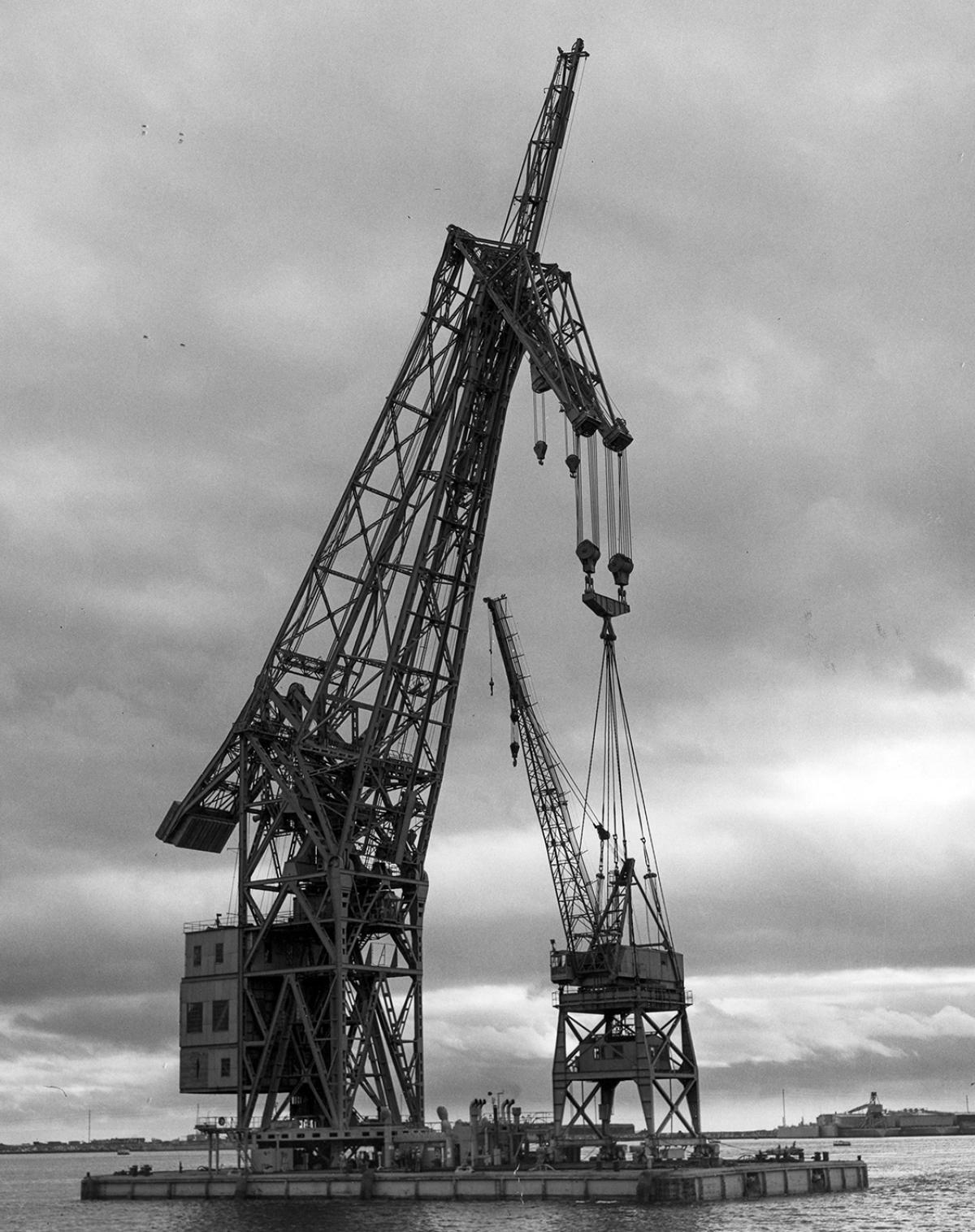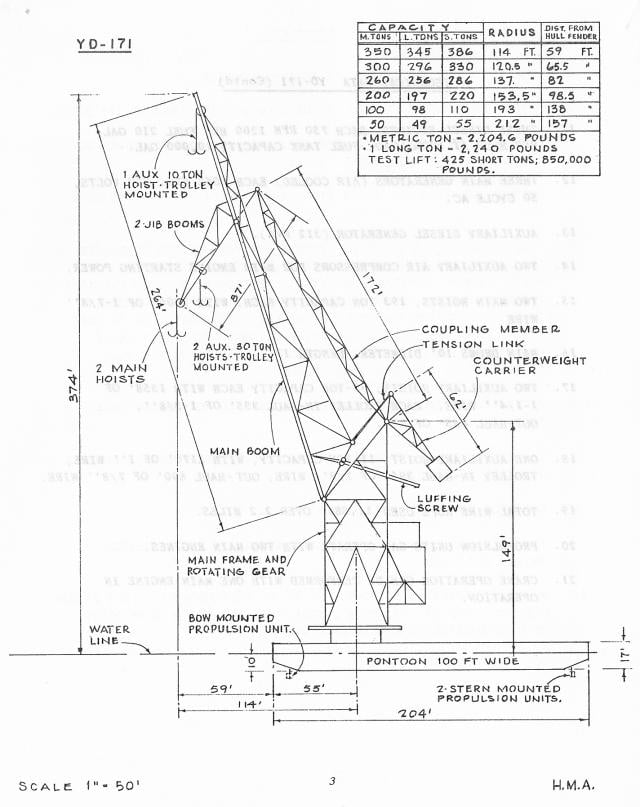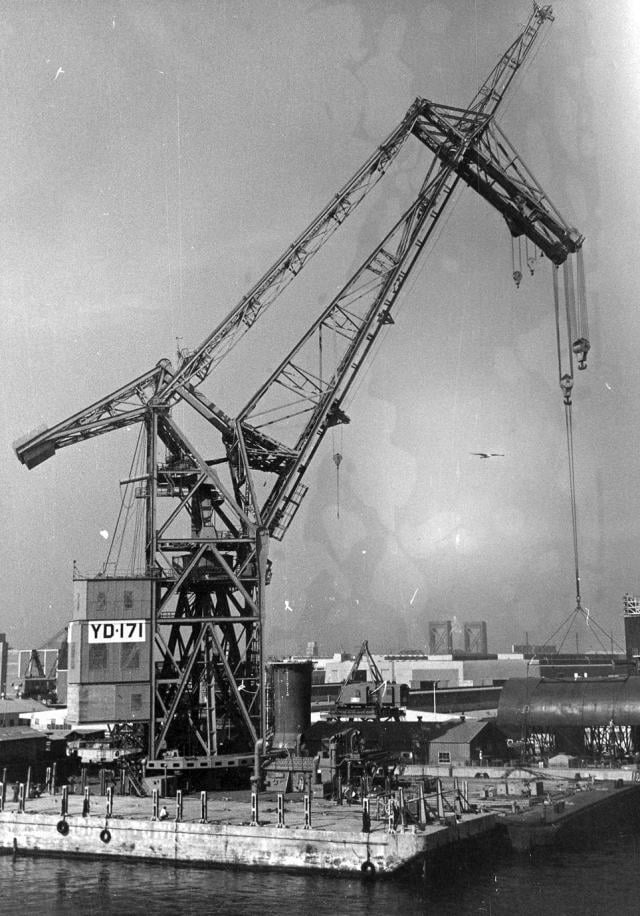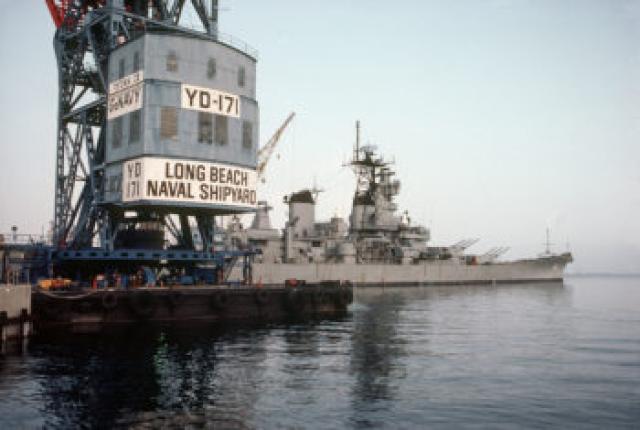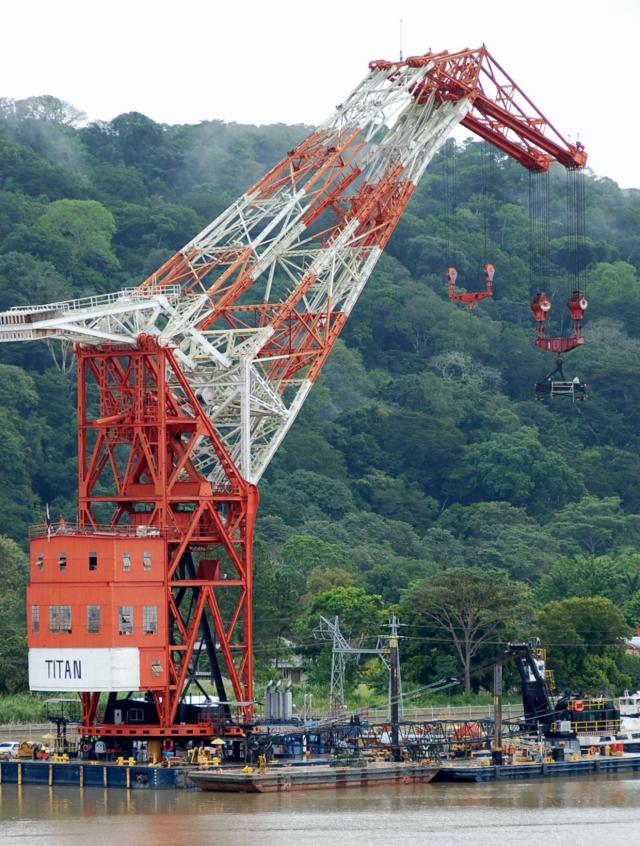Engineers at the Terminal Island Naval Shipyard in Long Beach, California, had a problem on their hands: how does one reassemble one of the tallest and largest cranes in the world? That was the situation in January, 1948 as the U.S. Navy worked to erect the gigantic, floating Schwimmkran Nr. 1, taken from Germany as war reparations at the end of World War II.
The gigantic crane, "naturalized" after the war as YD-171, was one of four built by Demag A. G. in 1941 in Bremerhaven, Germany to lift U-Boats out of the water for repair and for other heavy-lifting tasks. Crewed by three officers and twenty men, the four Schwimmkräne served in the Baltic Sea, Denmark, and the northern seaports. "Self propelled, the crane [could] slither through the water forward, backward, or sideways," noted Lieutenant Warren R. Hughes in a 1949 Proceedings article, by virtue of its six azimuth thrusters mounted below. Though quite maneuverable, the crane could not outmaneuver British and American bombers during the war. It was hit on several occasions and repaired.
One of her sister cranes was sunk in Hamburg, and the three others were divided among the victorious Allies by the Triparite Naval Commission. One, incomplete at the end of the war, went to the Soviet Union, who moved it overland in pieces to Danzig (Gdańsk) where for decades it was thought lost until it was spotted working at St. Petersburg's Admiralty Wharves as late as last year.
The other went to Great Britain, where it capsized in the English Channel under tow. The American crane, unofficially dubbed "Herman the German," was dismantled and towed across the Atlantic starting on 14 August, 1946, through the Panama Canal, and arriving at the Terminal Island Naval Shipyard on 18 November 1946. After its arrival, the delicate work of reassembly could begin.
The chief concern facing the engineers was how one reassembles a crane taller than the ones available. The Navy had USS Crane Ship No. 1 (AB-1), the former battleship Kearsarge. It could lift the 200-ton booms but could not lift it high enough to reassemble them. Finally, one bright engineer came up with the idea to put the big German derrick into drydock, lowering it by about 50 feet below sea level while Crane Ship No. 1 remained afloat. With the added height, the delicate operation of assembly could be accomplished.
Riggers working on the mammoth crane "clung to the booms by their imaginations," remarked Master Rigger O. A. Faircloth, as they dealt with the rolling of the crane ship, high winds, and the delicate process of hammering home linking pins. But it all went smoothly. "Never did a job I was more proud of than this one," continued Faircloth, "And to do it I had some of the best riggers in the world, all trained in the fact that safety comes first and showmanship plays no part in the rigging game . . . . When it was over I took a deep breath and went fishing.”
After extensive testing throughout the year, YD-171 was officially placed into service on 31 December 1948, and was a fixture at the Long Beach Naval Shipyard for decades. She lifted everything from the gun barrels of USS New Jersey (BB-62), steam locomotives for South Korea, the underwater habitat SEALAB II, the first atomic reactor on the West Coast, and even Howard Hughes' H-4 Hercules (the "Spruce Goose") when she was placed on display in Long Beach in the early 1980s.
Under the Base Realignment and Closure Act of 1990, the Naval Station at Long Beach was ordered closed by 30 September 1994, and YD-171 was deemed obsolete. She was sold to the Panama Canal Company on 19 September and was moved there in 1996 -- this time, fully assembled aboard a float-on/float-off ship.
The crane still serves there tending the locks and expansion project with a new name -- Titan.



